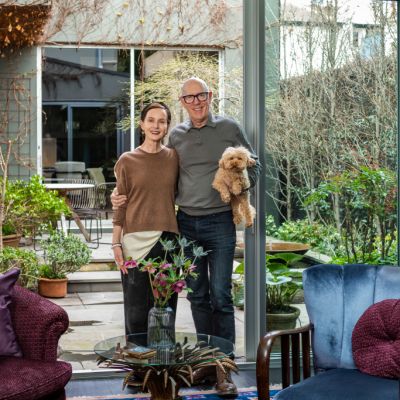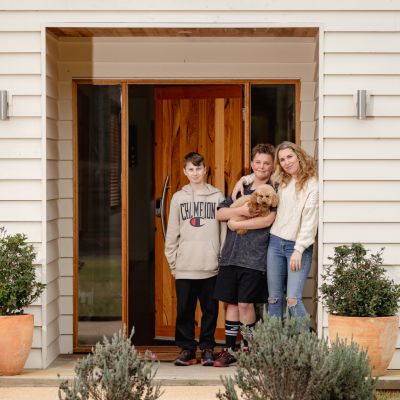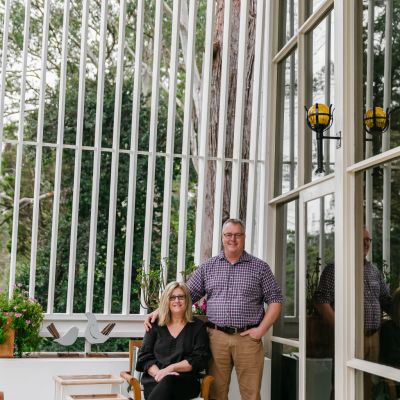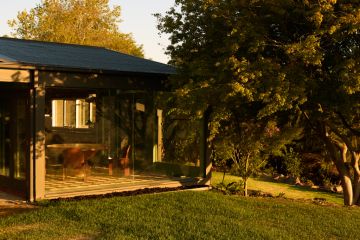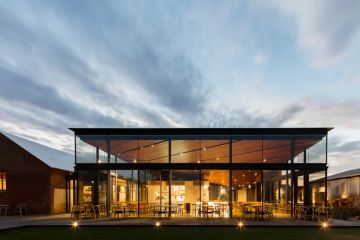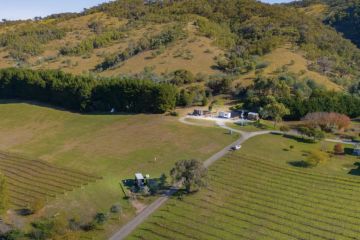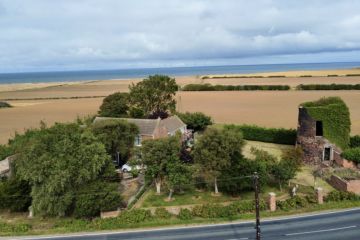Behind the listing: A 'possibly uninhabitable' Tassie farm now bursting with character for sale
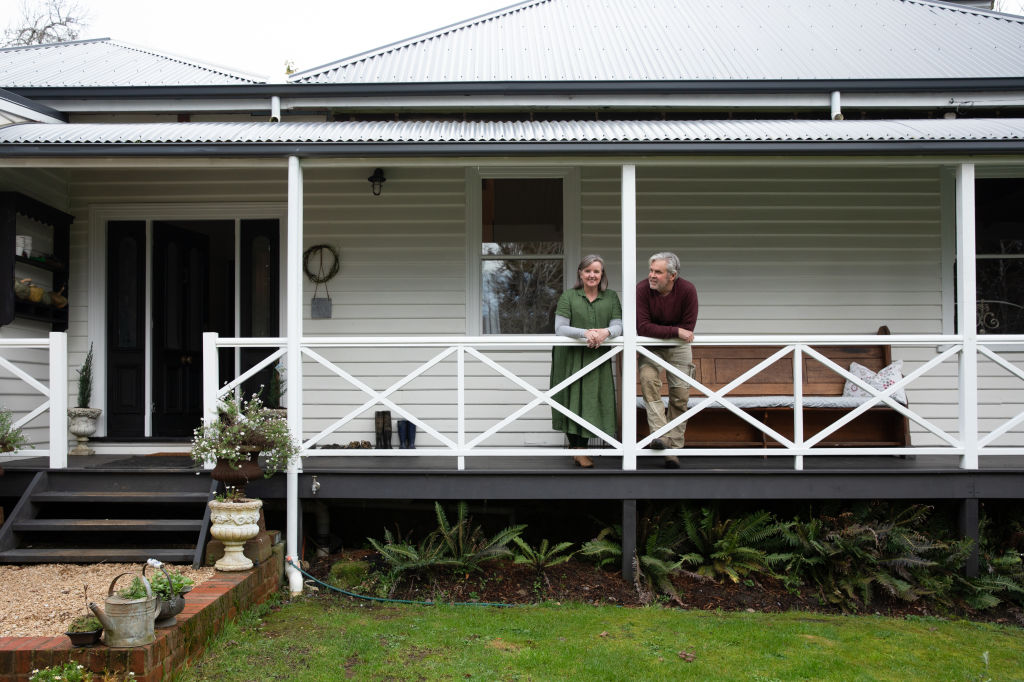
- Owners: Schoolteacher Lindy Rahn and her husband, Gavin, a retired mine blasting technician
- Address: 70 Fords Road, Geeveston, Tasmania
- Type of house: Restored 1895 farmhouse on eight hectares
- Price: Offers over $1.45 million

Serial renovators Lindy and Gavin Rahn had not long returned home to Tasmania after 15 years in Western Australia when Lindy spotted a derelict farmhouse for sale online.
Keen to realise a long-held dream of producing their own food, the couple had been on the lookout for some land, and Lindy thought the old property would be perfect; Gavin took a bit of convincing.
“Lindy lured me down here under the guise of seeing a different house because she knew this one was such a sh–hole,” he laughs. “The verandah was falling down and it had water damage, holes in the floor, possums in the ceiling, rats, and what we called a ‘poo room’ when we bought it because it was so filthy it looked as though someone had locked a cat in there.”
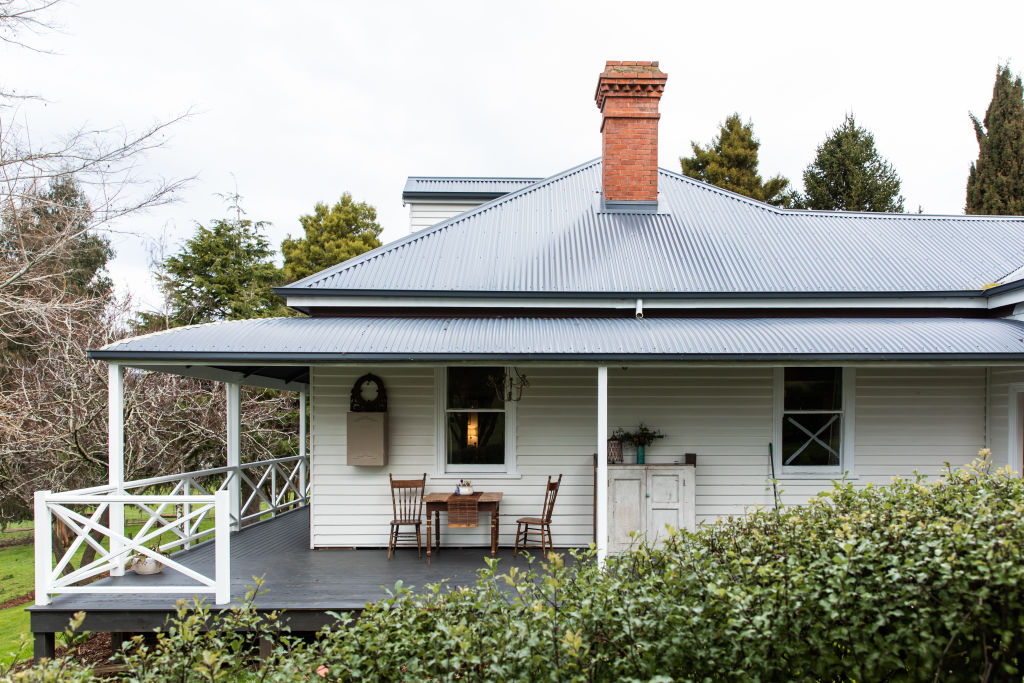
Lindy concedes the place was “possibly uninhabitable” when they signed on.
“Our kids are used to our crazy ways, but a lot of our friends thought that we were completely insane. [But] the house had a nice shape, and that classic Australian farmhouse layout with a wide hall down the middle, and we could see – ‘Well, Lindy could see,’ interjects Gavin – its potential straightaway.”
It didn’t take Gavin long to come around. While Lindy loved the house, he was taken by the land.
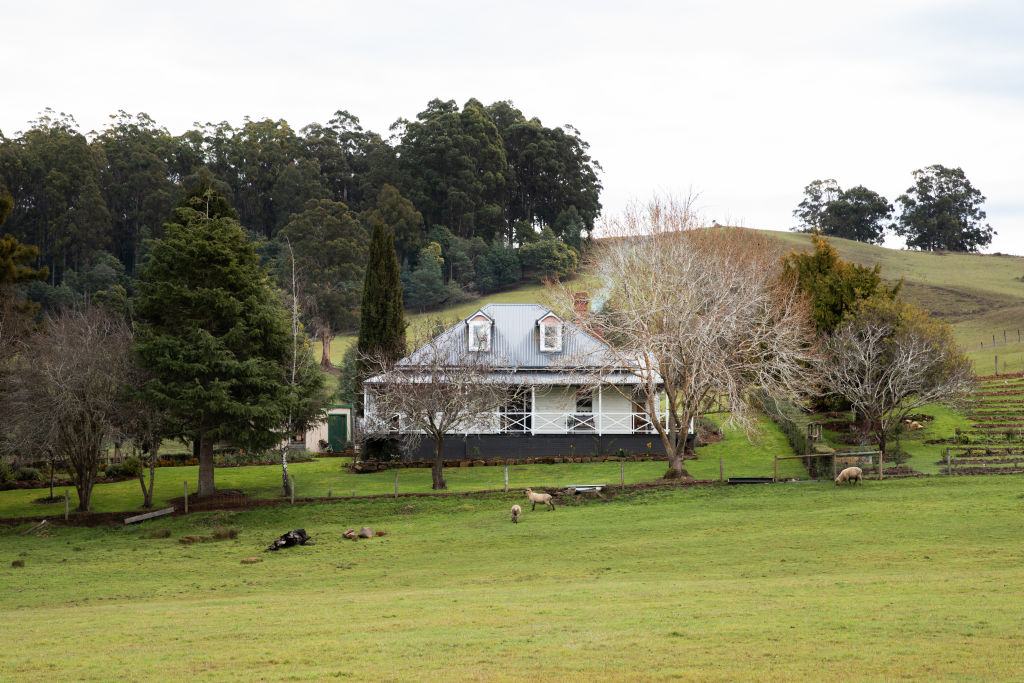
On a hill above the little town of Geeveston, James Henry Ford built the farmhouse on Fords Road and surrounded it with Californian redwoods. The Rahns say the year must have been 1895 or thereabouts.
“When we were stripping the walls, I found old newspapers behind the walls and old bus timetables,” says Lindy. “I did a bit of Google research, and it came up with about 1895, which is in keeping with the age of the house.”
The old house wasn’t grand enough for Ford’s wife, so the story goes, so he relocated his family to town soon after. The large farm remained intact until extensive subdivision carved up the surrounding hills into smaller lots sometime in the 1970s or 1980s, Lindy says. Ford’s initials are engraved in the stone wall at the back of the house, and his descendants live on the property next door.
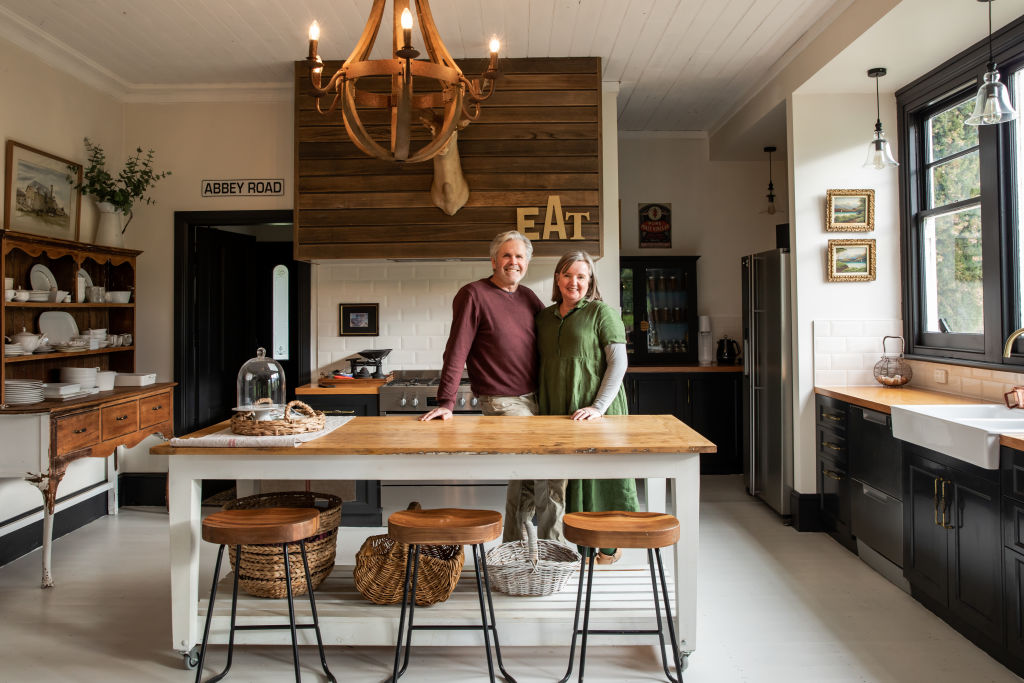
“When I went next door to say hello and introduce ourselves, I said, ‘We’re going to fix this house up over the next couple of years’, and he said, ‘Oh yeah, I’ve heard that before’,” says Gavin with a laugh. “I thought, we’ll show you!”
Unlike those who had come before them, the Rahns have successfully transformed Ford’s old farm into an Instagram-worthy property.
Living out of one room, without a kitchen or much of a bathroom, the couple threw themselves into the job, demolishing earlier renovations in the process.
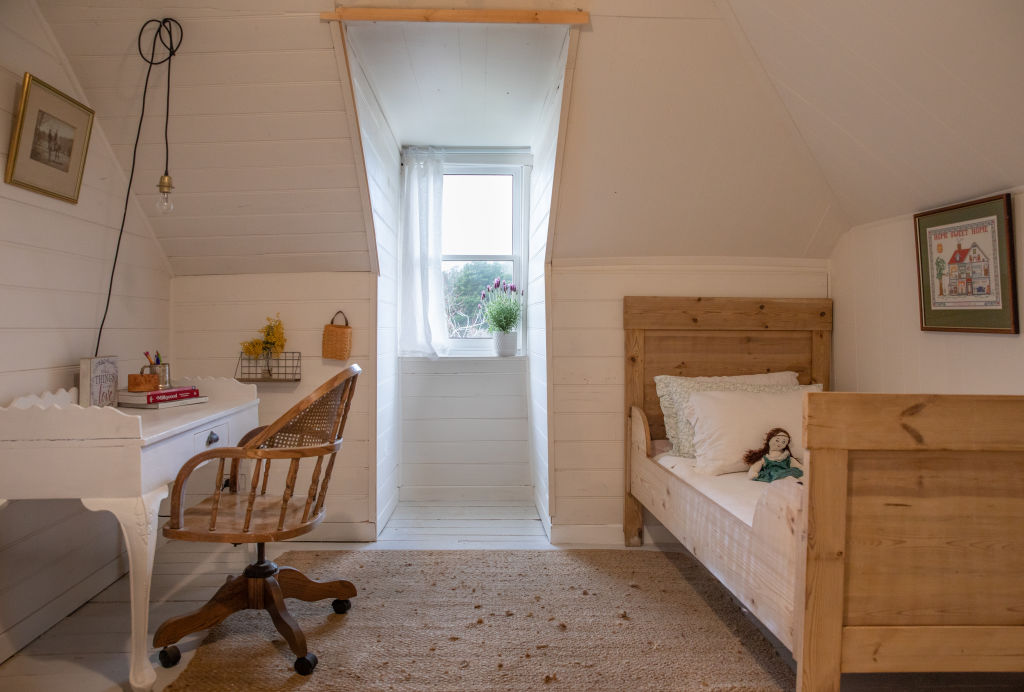
The big 1970s spiral staircase in the middle of the hall was the first to go, replaced with stairs more befitting the era, which now lead to the overhauled attic bedrooms.
Room by room, the Rahns worked their way through the house, salvaging what they could – where floorboards or architraves couldn’t be saved, antique replacements and quality reproductions have been sourced.
In the depths of COVID-19 lockdown, with no tradespeople available, Lindy and Gavin turned to YouTube to complete the plastering in their beautiful lounge space, which features a huge red-brick chimney.
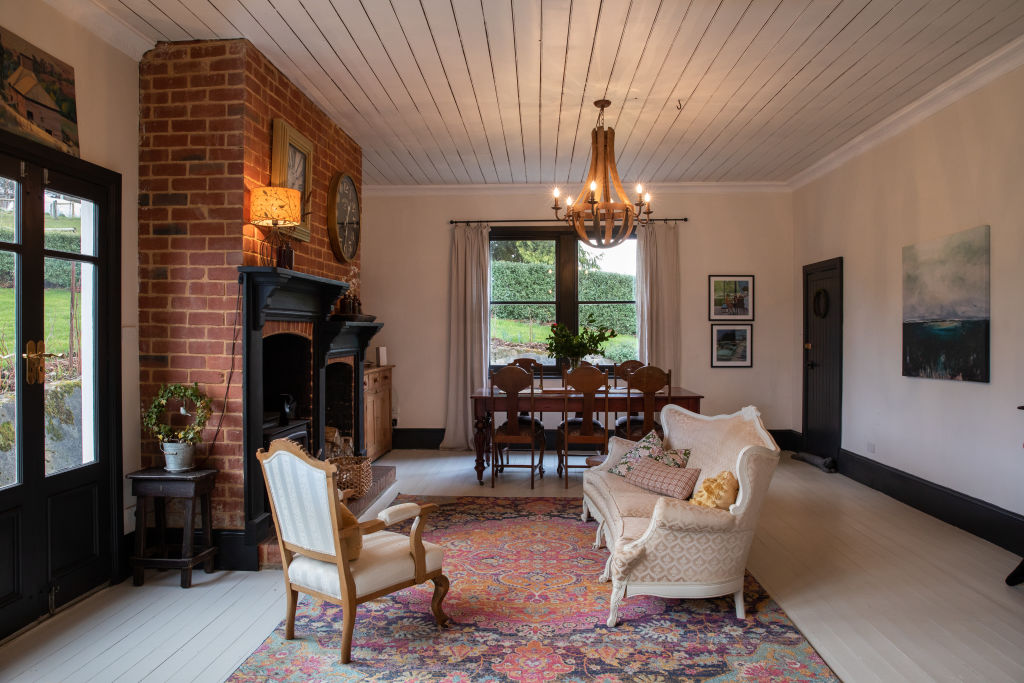
“We thought, ‘How hard can it be?’” laughs Lindy. “And the builder did later compliment us on our work, so we were happy with that.”
A bathroom was added to create a main suite, with a new kitchen established in one of the empty rooms. Its huge rangehood sits in the old chimney space, removed by a previous owner. Lindy sanded old floorboards and asked the builder to make a canopy to mirror the shape of the old chimney. The island bench is made from an old table, another lockdown project.
Above the porcelain sink, a big window looks across the farm – the paddocks and dam, black-and-white cows a stark contrast against the green, with the resident wedge-tailed eagles circling overhead.

Outside, the derelict verandah had to be rebuilt with the help of a man who makes water tanks and could replicate the very specific angle of the bull-nosed edging, testament to the couple’s attention to detail and desire to remain true to the old property.
In their four and a half years at what is now known as Green Gate Farm, the pair have loved their time as farmhands, growing their own vegetables, producing milk, meat and honey. Mostly, though, they have cherished living with their animals – dogs, geese, ducks, chooks, goats, cows, sheep (including “an adopted sheep with one bung eye”) and, now, 10 lambs.
“We have learnt so much about animals, how they have feelings and how they can communicate,” says Lindy. “It’s been incredibly special.”
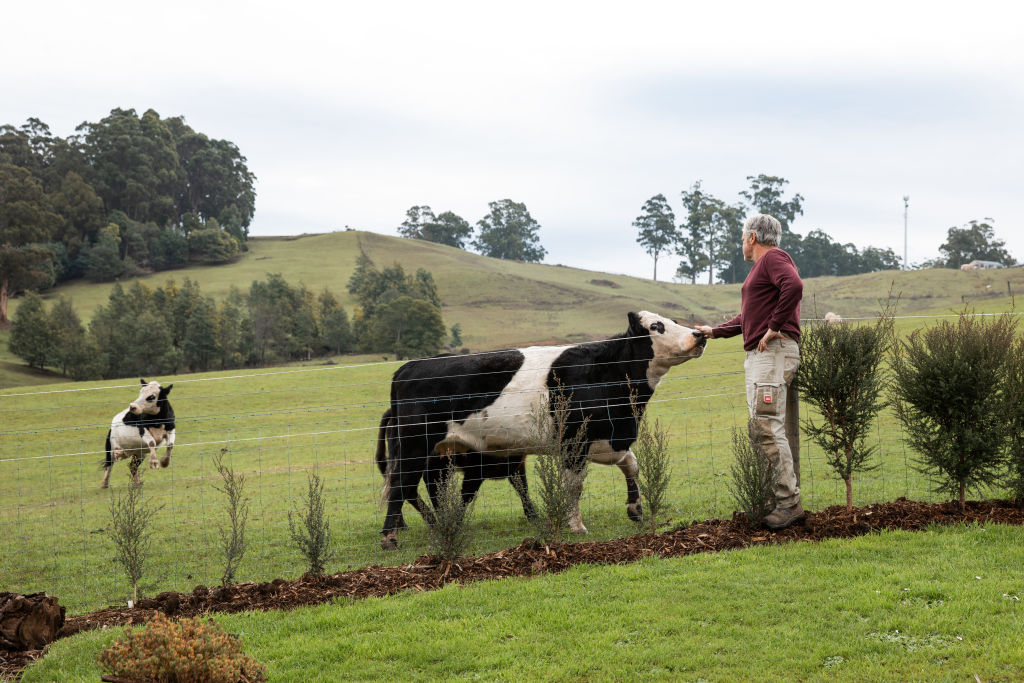
During their first spring there, a neighbour had come to perform an emergency caesarean on a dying sheep, and their cows appeared and stood vigil by the distressed animal.
“I was completely blown away by it,” Lindy says. “They just stood there very quietly in a circle while she was passing away, and then after she had died, they walked off really quietly. It was amazing. We won’t see that again in our life.”
The Rahns have enjoyed running farm tours for families, introducing children to the joys of feeding and caring for the animals, picking vegetables and tasting honey. They had also planned to run events out of the beautifully restored little dairy and renovated picker’s hut.

However, in a familiar twist, the pandemic has shifted their focus and the couple now hope to travel before deciding on their next project. They have found homes for many of their animals with neighbours and will agist their beloved cows on a nearby farm.
After their gallivanting, the Rahns hope to return to Geeveston. With its charming blend of country folk, boutique cideries, world-class sushi, and proximity to national parkland – “And don’t forget the golf course,” adds Gavin – the vibrant little community is hard to trump.
We recommend
We thought you might like
States
Capital Cities
Capital Cities - Rentals
Popular Areas
Allhomes
More
